An organic compound when reacts with dil. HNO3 produces two isomers A and B. A possess intramolecular hydrogen bonding and B possess intermolecular hydrogen bonding when the same compound react with conc. HNO3 it produces a strong acid D Find the No of oxygen atom in D
To solve the problem step by step, we need to analyze the information given in the question.
Step 1: Identify the Organic Compound
The question states that an organic compound reacts with dilute HNO3 to produce two isomers, A and B. The compound that fits this description is phenol (C6H5OH).
Step 2: Determine the Isomers
When phenol reacts with dilute HNO3, it can form two isomers:
- Isomer A: Ortho-nitrophenol (2-nitrophenol) which has intramolecular hydrogen bonding.
- Isomer B: Para-nitrophenol (4-nitrophenol) which has intermolecular hydrogen bonding.
Step 3: Reaction with Concentrated HNO3
When phenol reacts with concentrated HNO3, it undergoes nitration to form a stronger acid, which in this case is 2,4,6-trinitrophenol (also known as picric acid).
Step 4: Determine the Structure of D
The structure of 2,4,6-trinitrophenol (D) contains:
- One phenolic hydroxyl group (-OH)
- Three nitro groups (-NO2)
Step 5: Count the Oxygen Atoms in D
Now, we need to count the number of oxygen atoms in 2,4,6-trinitrophenol:
- The hydroxyl group contributes 1 oxygen atom.
- Each of the three nitro groups contributes 2 oxygen atoms (3 nitro groups × 2 = 6 oxygen atoms).
Adding these together:
1 (from -OH) + 6 (from 3 × -NO2) = 7 oxygen atoms.
Final Answer
The number of oxygen atoms in compound D (2,4,6-trinitrophenol) is 7.
---
The question states that an organic compound reacts with dilute HNO3 to produce two isomers, A and B. The compound that fits this description is phenol (C6H5OH).
When phenol reacts with dilute HNO3, it can form two isomers:
- Isomer A: Ortho-nitrophenol (2-nitrophenol) which has intramolecular hydrogen bonding.
- Isomer B: Para-nitrophenol (4-nitrophenol) which has intermolecular hydrogen bonding.
When phenol reacts with concentrated HNO3, it undergoes nitration to form a stronger acid, which in this case is 2,4,6-trinitrophenol (also known as picric acid).
The structure of 2,4,6-trinitrophenol (D) contains:
- One phenolic hydroxyl group (-OH)
- Three nitro groups (-NO2)
Now, we need to count the number of oxygen atoms in 2,4,6-trinitrophenol:
- The hydroxyl group contributes 1 oxygen atom.
- Each of the three nitro groups contributes 2 oxygen atoms (3 nitro groups × 2 = 6 oxygen atoms).
1 (from -OH) + 6 (from 3 × -NO2) = 7 oxygen atoms.
The number of oxygen atoms in compound D (2,4,6-trinitrophenol) is 7.
Topper's Solved these Questions
Similar Questions
Knowledge Check
The hydrogen bond is an electrostatic attractive force between covalently bonded hydrogen atom of one molecule and an electronegative atom like (F,O,N) of other molecule. Hydrogen bond is nearly an electrostatic attractive force and not a normal chemical bond. It is very weak (2-10 kcal/mol) as compared to a colvent bond (strength 50-100 kcal/mol). In intramolecular hydrogen bonding, the two or more than two molecules of the same or different substances are linked to form polymeric aggregate. Intermolecular hydrogen bonding increases the boiling point of the compound and also its solubility in water. Intramolecular hydrogen bonding occurs within two atoms of the same molecule. Intramolecular hydrogen bonding is also called chelation, since it involves ring formation. intramolecular hydrogen bonding decreases the boiling point of the compound and also its solubility in water.
Select the compound which involves intramolecular hydrogen bonding.
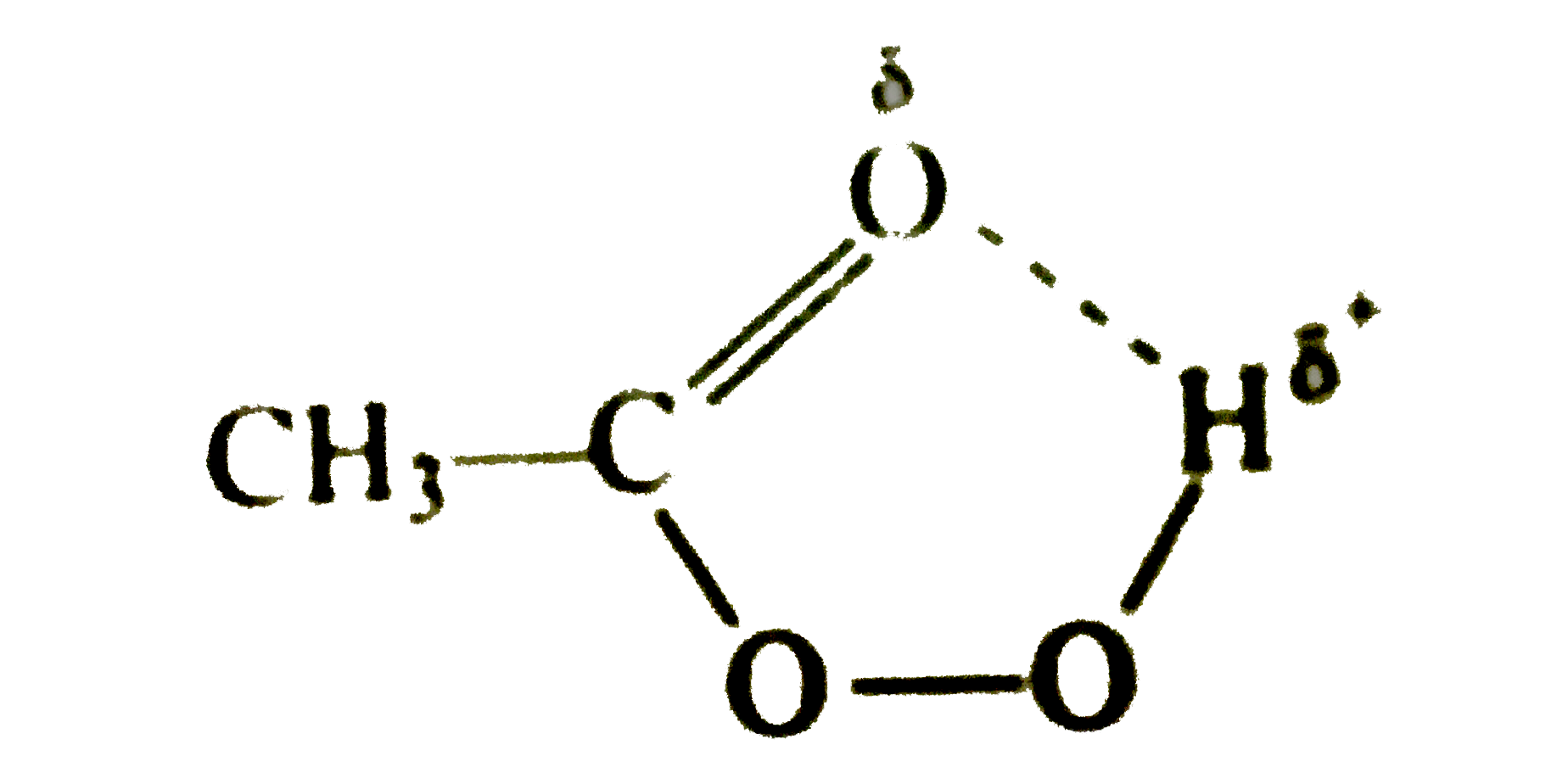 AHCOOHBCH3COOHCC6H5COOHDCH3COOH
AHCOOHBCH3COOHCC6H5COOHDCH3COOHThe hydrogen bond is an electrostatic attractive force between covalently bonded hydrogen atom of one molecule and an electronegative atom like (F,O,N) of other molecule. Hydrogen bond is nearly an electrostatic attractive force and not a normal chemical bond. It is very weak (2-10 kcal/mol) as compared to a colvent bond (strength 50-100 kcal/mol). In intramolecular hydrogen bonding, the two or more than two molecules of the same or different substances are linked to form polymeric aggregate. Intermolecular hydrogen bonding increases the boiling point of the compound and also its solubility in water. Intramolecular hydrogen bonding occurs within two atoms of the same molecule. Intramolecular hydrogen bonding is also called chelation, since it involves ring formation. intramolecular hydrogen bonding decreases the boiling point of the compound and also its solubility in water.
Which of the following compounds is (are) stabilised by intramolecular hydrogen bonding?ACl−CI∣C∣CI− OH∣C∣ OH−HB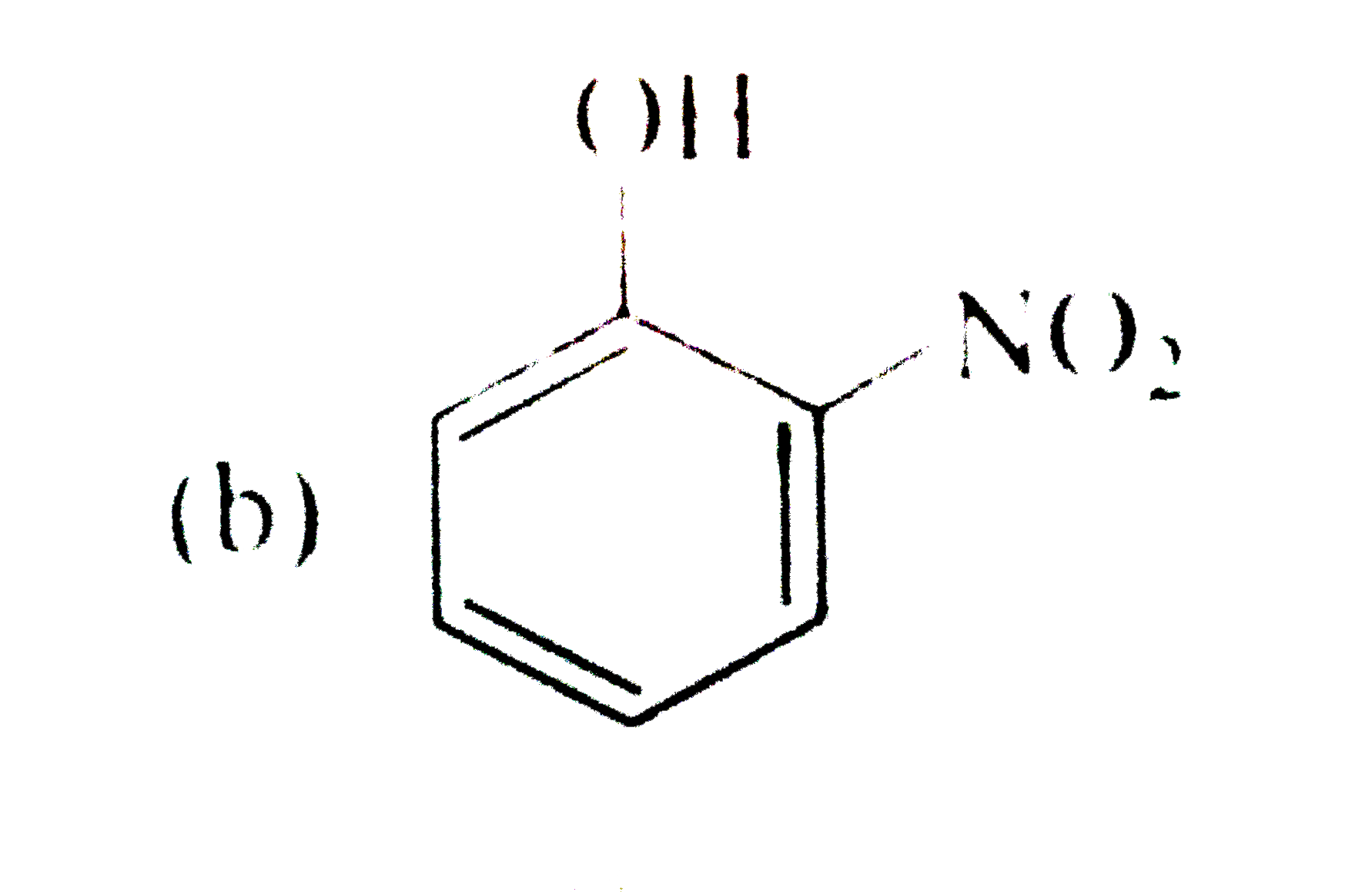 CCH3−OH∣C=CH−O∣∣C−OC2H5DCH2OH∣CH2OH
CCH3−OH∣C=CH−O∣∣C−OC2H5DCH2OH∣CH2OHThe hydrogen bond is an electrostatic attractive force between covalently bonded hydrogen atom of one molecule and an electronegative atom like (F,O,N) of other molecule. Hydrogen bond is nearly an electrostatic attractive force and not a normal chemical bond. It is very weak (2-10 kcal/mol) as compared to a colvent bond (strength 50-100 kcal/mol). In intramolecular hydrogen bonding, the two or more than two molecules of the same or different substances are linked to form polymeric aggregate. Intermolecular hydrogen bonding increases the boiling point of the compound and also its solubility in water. Intramolecular hydrogen bonding occurs within two atoms of the same molecule. Intramolecular hydrogen bonding is also called chelation, since it involves ring formation. intramolecular hydrogen bonding decreases the boiling point of the compound and also its solubility in water.
Which of the following molecules is dimerised when dissolved in non-polar or organic solvent?AR−COOHBCOOH| COOHCR−OHD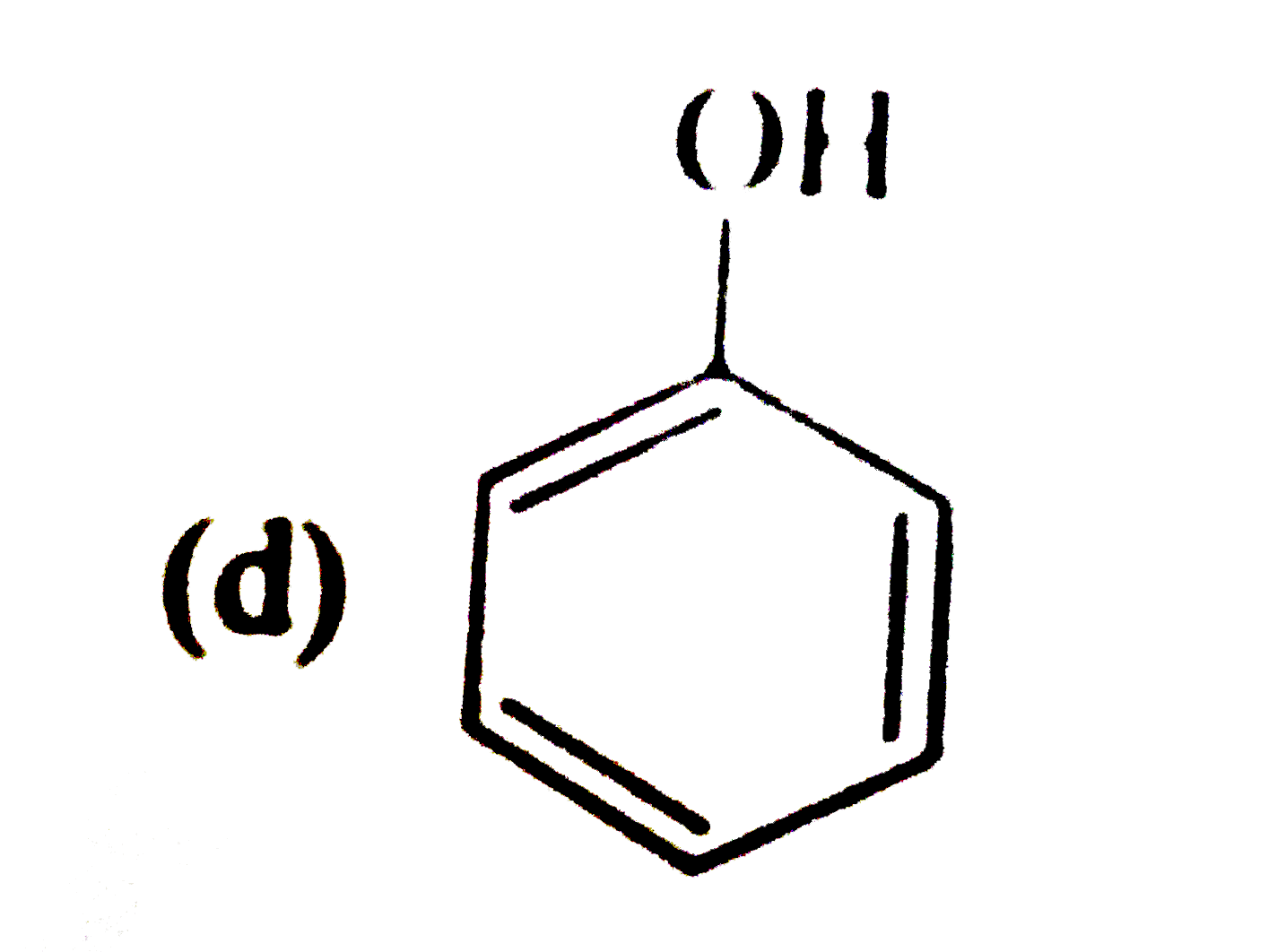
Which acid is produced when phenol is treated with conc. HNO3 ?
View SolutionStructures of molecules of two compounds are given below.
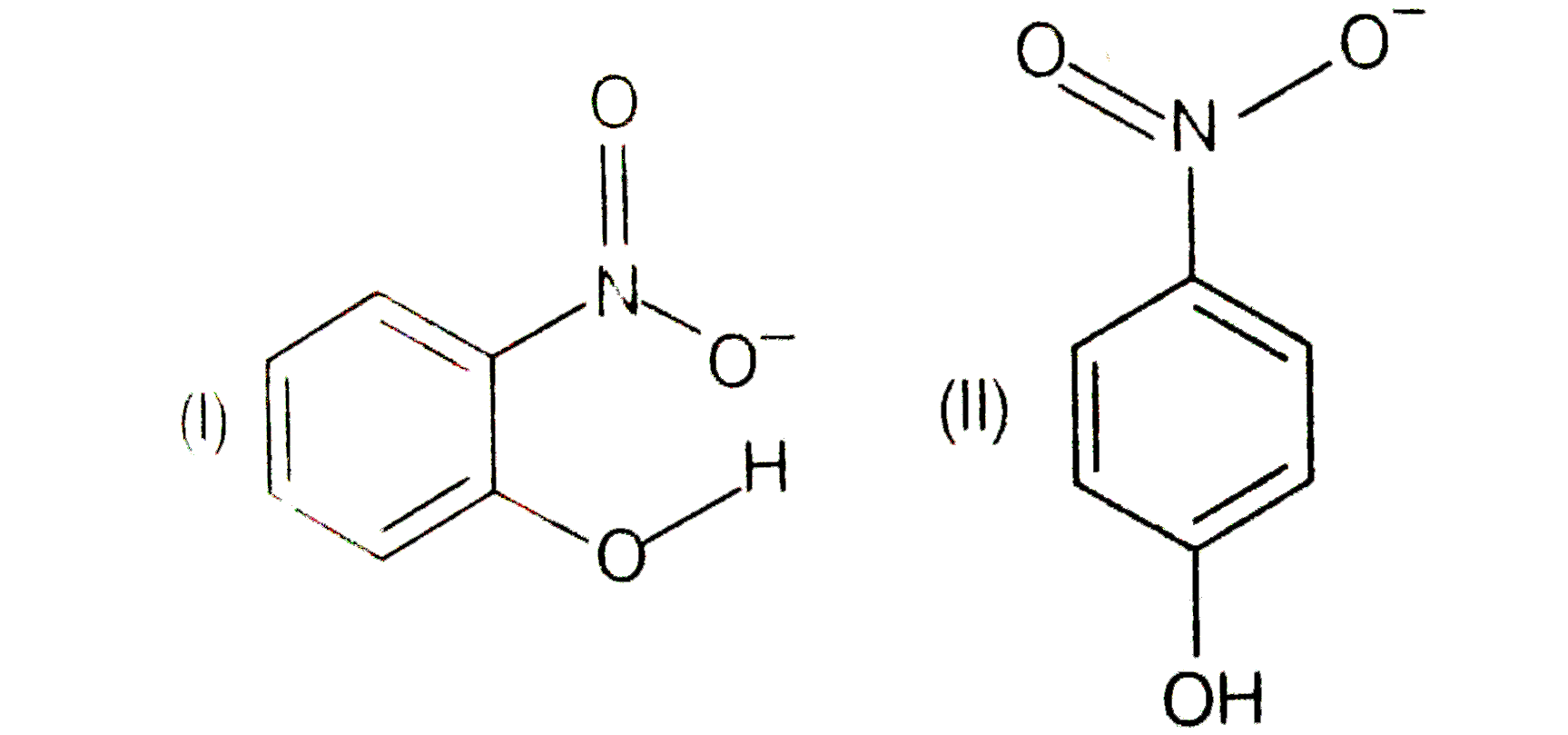
a) Which of the two compounds will have intermolecular hydrogen bonding and which compound is expected to show intramolecular hydrogen bonding?
b) The melting point of compound depends on, among other things, the extent of hydrogen bonding. On this basis explain which of the above two compounds will show higher melting point?
c) Solubility of compounds in water depends on powers to form hydrogen bonds with water. Which of the above compounds will form hydrogen bond with easily and be more stable in it?
View SolutionStructures of molecules of two compounds are given:
(a) Which of the two compounds will have intermolecular hydrogen bonding and which compound is expected to show intramolecular hydrogen bonding.
(b) The melting point of a compound depends on, among other things, the extent of hydrogen bonding. On this basis explain which of these two compounds will show higher melting point.
(c ) Solubility of compounds in water depends on power of formed hydrogen bonds with water. Which of these compounds will from hydrogen bond will water easily and be more soluble in it ?
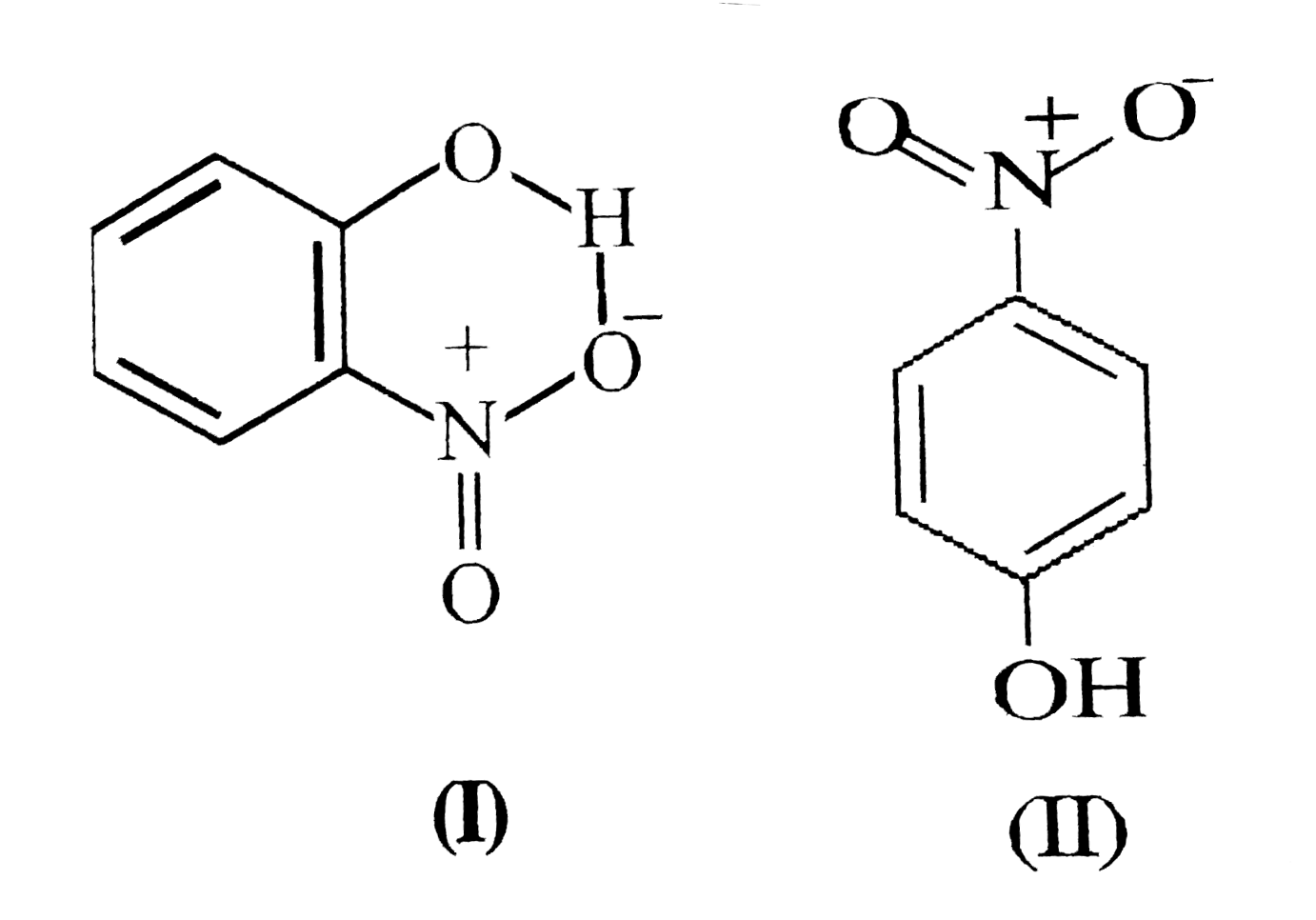
View SolutionWhat happens when copper reacts with (i) conc. HNO3 (ii) Dil. HNO3 ?
View SolutionStructures of molecules of two compounds are given below :

(a) Which of the following compounds will have intermolecular hydrogen bonding and which compound is expected to show intramolecular hydrogen bonding?
(b) Which of the above two compounds will show higher melting point?
(c ) Which of the above compounds will form hydrogen bond with water easily and be more soluble in it?
View Solution
